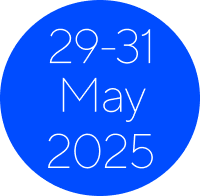Chair: Bruno Tirotti Saragiotto (Australia)
Speakers: Alexandre Lopes (United States), Wintana Mekonnen (Ethiopia), Gisela Miyamoto (Brazil)
- Explore the effectiveness and detailed components of telerehabilitation interventions for musculoskeletal conditions across the globe
- Analyse the application of telerehabilitation in managing chronic pain within low-resource environments, highlighting cost-effectiveness, practical strategies, and outcomes
-
Design actionable strategies for the implementation of telerehabilitation in low-income settings, considering local infrastructure, costs, stakeholder engagement, and resource availability
Several studies have demonstrated the effectiveness of telerehabilitation for various musculoskeletal conditions, including back pain, hip and knee osteoarthritis, and post-surgical rehabilitation[1,2]. These programs often include exercises, education, and remote monitoring delivered via videoconferencing or mobile apps. Many patients report high satisfaction with telerehabilitation programs, including convenience, accessibility, reduced travel time and reduced costs as significant benefits [3,4]. Despite the potential benefits, there are challenges associated with implementing telerehabilitation, especially in low- and middle-income countries (LMIC) [5]. Challenges include limited technological infrastructure, inconsistent access to the Internet, lack of digital literacy among patients and providers, and insufficient regulatory frameworks [3]. Moreover, existing healthcare inequities may be exacerbated by disparities in access to the necessary technologies and skilled providers, which can hinder the reach and effectiveness of telerehabilitation. Cultural and language barriers further complicate the delivery of services. Addressing these challenges requires tailored solutions that consider the unique contexts of LMICs to ensure effective and sustainable implementation across diverse populations.
Learning objective 1: We will present the results of three Cochrane systematic reviews on the effectiveness of telerehabilitation for back pain, neck pain and knee and hip osteoarthritis (three most common chronic pain). In addition, we will present the partial results of a scoping review on the intervention content of telerehabilitation using osteoarthritis as an example. Discussions will focus on identifying the components of successful interventions and how to adapt to the context of LMICs. The Cochrane systematic reviews had their protocols published and are being concluded by two authors of this symposium.
Learning objective 2: We will present the results of two randomised controlled trials (RCTs) being conducted in different regions of Brazil (ReabilitaDor trial and EducaDOR trial) [6,7,8]. The ReabilitaDor trial is a RCT with economic evaluation of an asynchronous telerehabilitation program conducted in 160 people with chronic pain in Sao Paulo state. The EducaDOR is an ongoing hybrid type III implementation-effectiveness trial conducted in the public health system of Parana state. Discussions will provide insights into the adaptability and feasibility of these interventions in a low-resource setting.
Learning objective 3: We will present data from feasibility studies and needs assessments for implementing telerehabilitation in a hospital in Ethiopia (Tikur Anbessa Hospital, Addis Ababa), emphasising strategic planning, stakeholder engagement, and the adaptation of technologies to local contexts. This will analyse the specific challenges faced by low-income countries and discuss solutions to overcome these barriers. Key insights will be shared on designing cost-effective telerehabilitation systems that address healthcare inequities. This includes drawing from real-world data to propose models that are appropriate for LMICs, avoiding the direct replication of high-income country frameworks which often do not suit the local realities and resources of LMICs.
This symposium will explore telerehabilitation research, inspire practical and innovative applications, and connect interdisciplinary knowledge. By including diverse international perspectives and emphasising inclusivity, we aim to impact global health systems positively in the context of LMIC.
- de Oliveira Lima L, Saragiotto BT, Costa LOP, at al. Self-Guided Web-Based Pain Education for People With Musculoskeletal Pain: A Systematic Review and Meta-Analysis. Phys Ther. 2021 Oct 1;101(10):pzab167.
- Baroni MP, Saragiotto BT. The state of the art in telerehabilitation for musculoskeletal conditions. Arch Physiother. 2023 Jan 4;13(1):1.
- Fernandes LG, Devan H, Fioratti I, Kamper SJ, Williams CM, Saragiotto BT. At my own pace, space, and place: a systematic review of qualitative studies of enablers and barriers to telehealth interventions for people with chronic pain. Pain. 2022 Feb 1;163(2):e165-e181.
- Fernandes LG, Oliveira RFF, Barros PM, Fagundes FRC, Soares RJ, Saragiotto BT. Physical therapists and public perceptions of telerehabilitation: An online open survey on acceptability, preferences, and needs. Braz J Phys Ther. 2022 Nov-Dec;26(6):100464.
- Fernandes LG, Saragiotto BT. To what extent can telerehabilitation help patients in low- and middle-income countries? Braz J Phys Ther. 2021 Sep-Oct;25(5):481-83.
- Baroni MP, Hespanhol L, Miyamoto GC, Daniel CR, Fernandes LG, Reis FJJ, Pate JW, Saragiotto BT. Implementation of an online pain science education for chronic musculoskeletal pain in Brazilian public health system: protocol for a hybrid type III randomised controlled trial with economic evaluation. BMC Musculoskelet Disord. 2023 Apr 10;24(1):277.
- Fioratti I, Miyamoto GC, Fandim JV, Ribeiro CPP, Batista GD, Freitas GE, Palomo AS, Reis FJJD, Costa LOP, Maher CG, Saragiotto BT. Feasibility, Usability, and Implementation Context of an Internet-Based Pain Education and Exercise Program for Chronic Musculoskeletal Pain: Pilot Trial of the ReabilitaDOR Program. JMIR Form Res. 2022 Aug 30;6(8):e35743.
- Fioratti I, Saragiotto BT, Reis FJJ, Miyamoto GC, Yamato TP, Fandim JV, Maher CG, Costa LOP. Evaluation of the efficacy of an internet-based pain education and exercise program for chronic pain in comparison with online self-management booklet: a protocol of a randomised controlled trial with assessor-blinded, 12-month follow-up, and economic evaluation. BMC Musculoskelet Disord. 2020 Jun 26;21(1):404.
See the 24 focused symposia to be presented at congress.
Find out who the key speakers at congress will be.
Find out which clinical topics will be covered in these discussion-based seminars.




